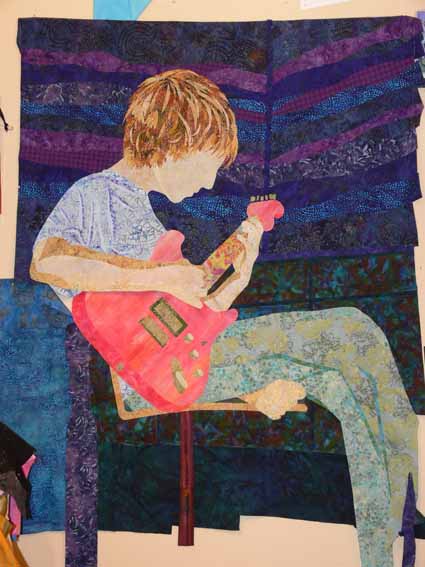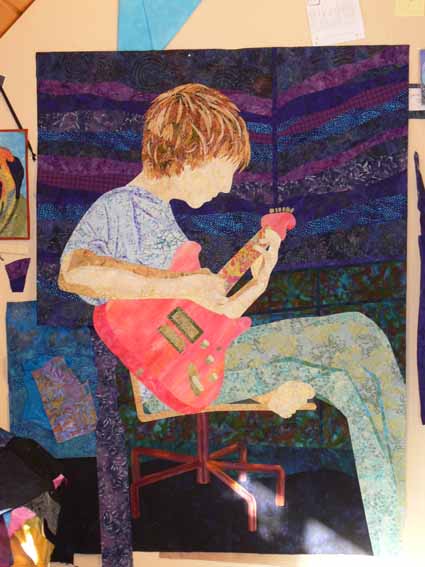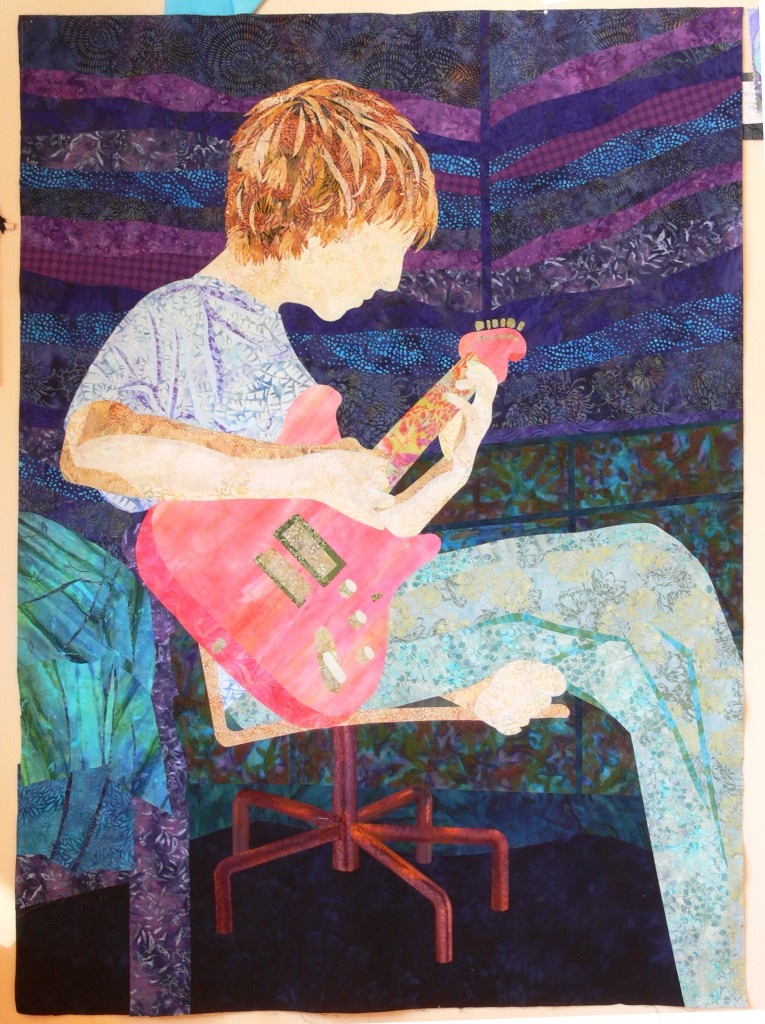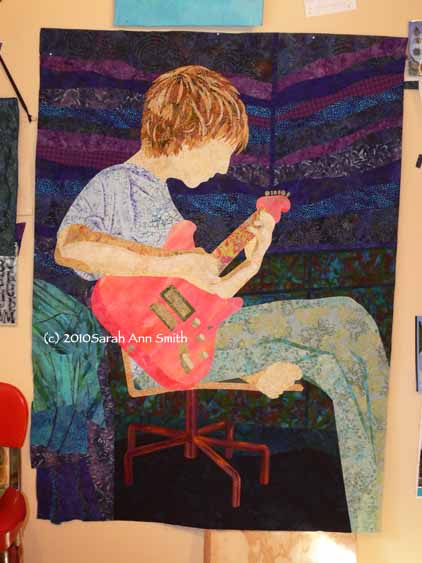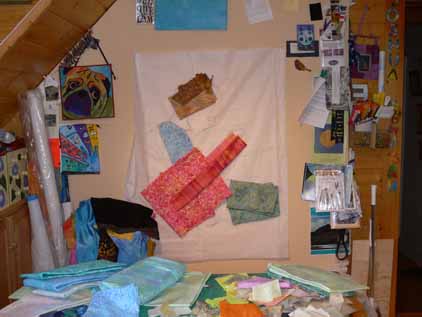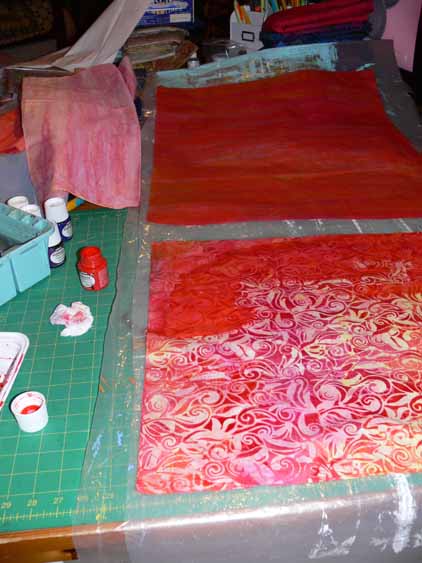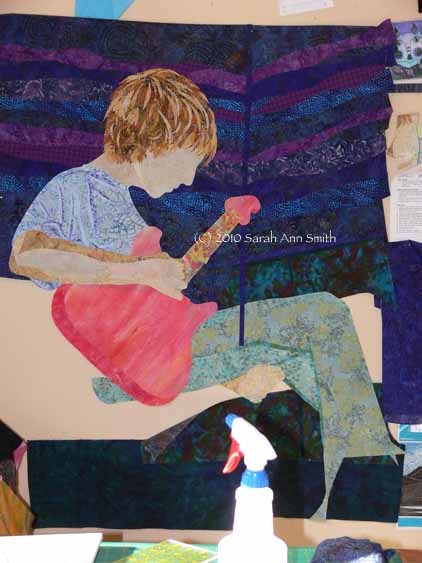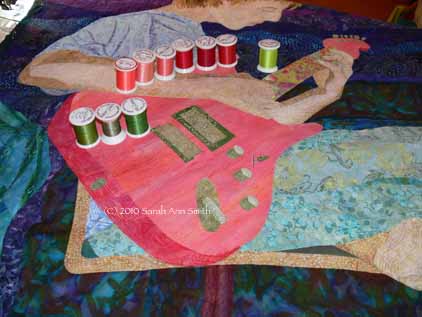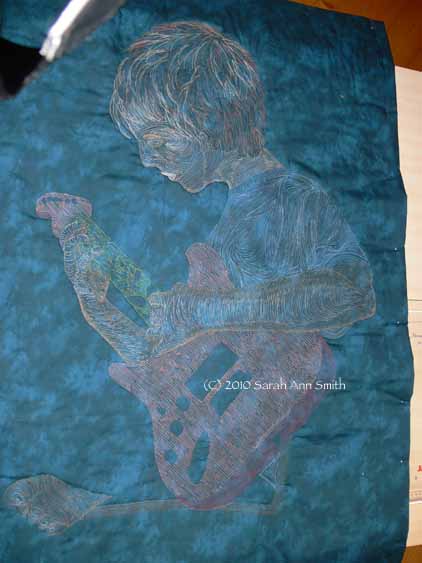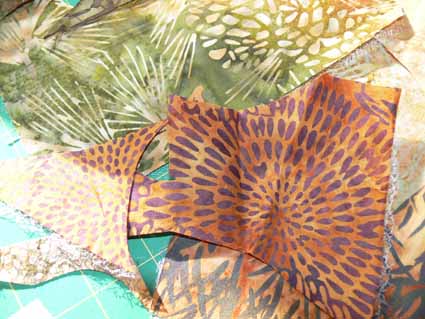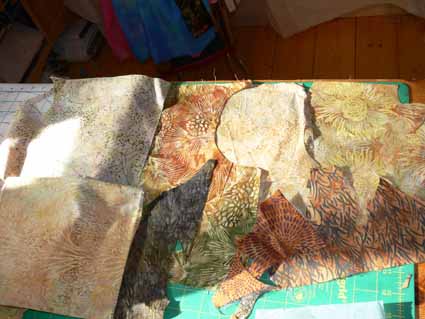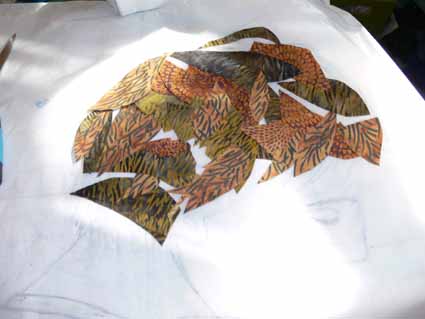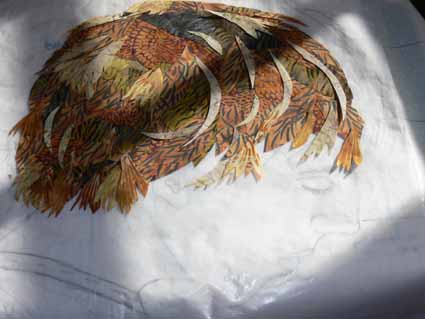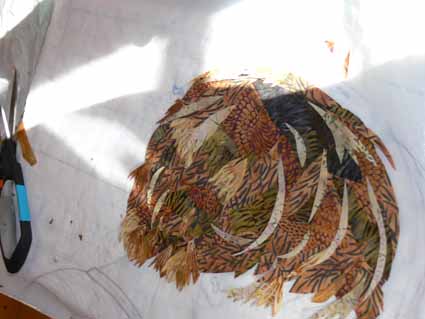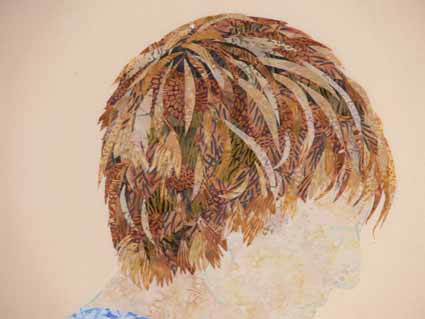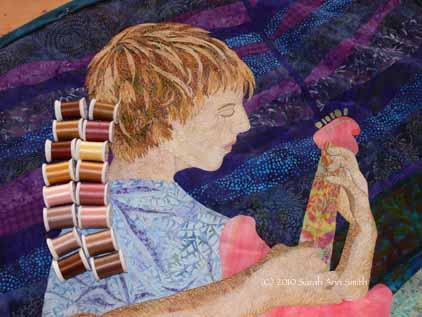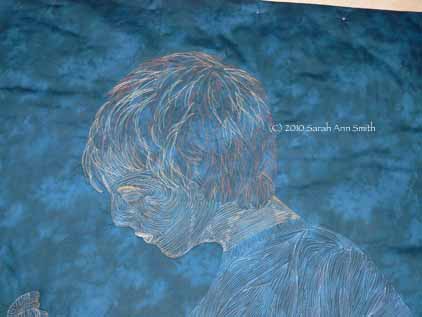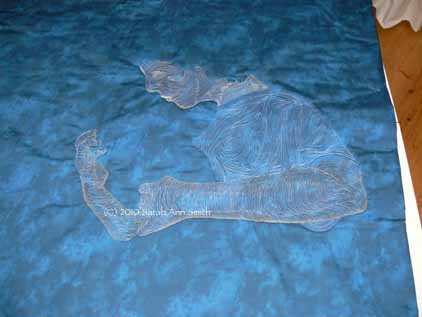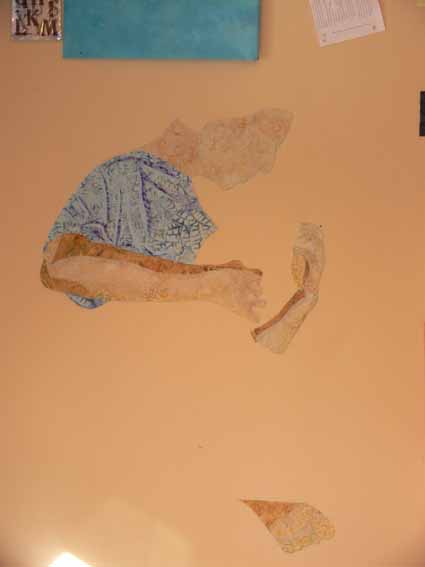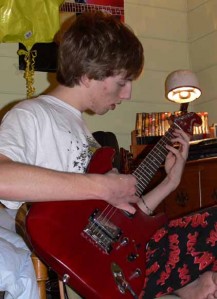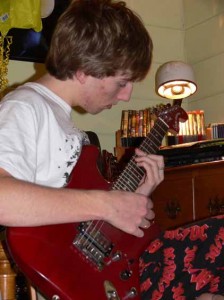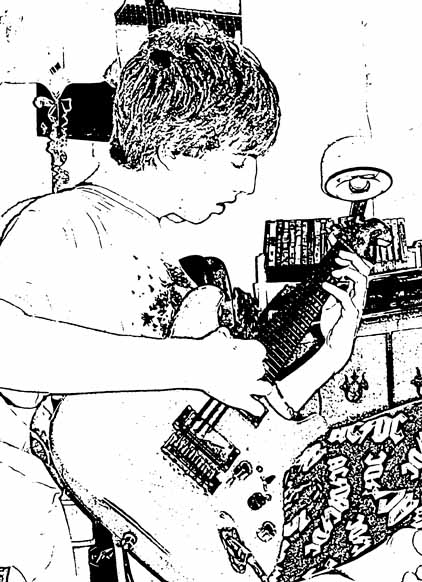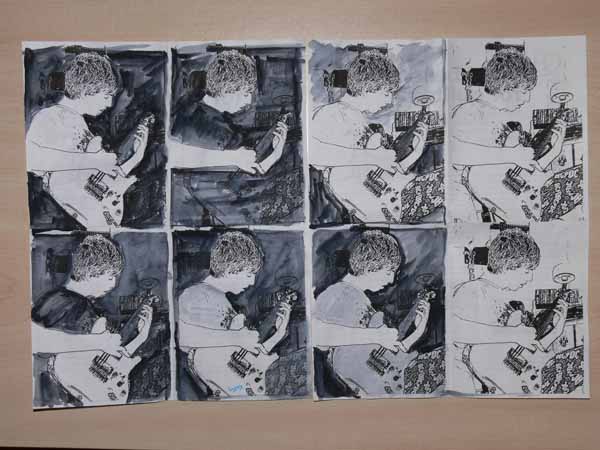Joshua, the quilt in process, #5
Monday, April 26th, 2010Some time ago (that great whooooshing and sucking sound is time roaring past us), I blogged about having my Naiads quilt critiqued at QuiltCritique.com. A joint venture with Lisa Chipetine and Sandra Sider (who also happen to be the current president and vice President of SAQA–Studio Art Quilt Associates), this is an online process where you send in your jpegs to Sandra two weeks before an appointed date. She ponders and comes up with suggestions to improve your quilt. She has that great skill of asking questions that make you think, that are open-ended and help you learn as you talk about something.
(I promise…there are pictures below!)
Well, the process was SO educational–I think listening to the critiques of the others on that evening’s session were maybe even more informative because I wasn’t invested in the outcome, but an observer–that I really wanted to have Sandra look at this piece. So I SLAMMED to get it done in time to have her review it and still have enough time to make changes (if needed) to the top and then get the quilting done by the deadline. It was worth every penny of the modest fee and MORE! Best of all, Sandra had only three relatively minor suggestions:
1. Add details to the face; I told her the entire face would be added in the stitching… I left the face just as a single piece of cloth at the top stage. Problem solved.
2. There was a tiny bit of dark wall showing between Joshua’s hand and the neck of the guitar–it really bugged Sandra and pulled her eye, distracting her. This was not a good thing, so even though it was true to life, it needed editing. So I moved his hand a bit to be more closely curved around the guitar neck. Problem solved.
3. The initial lines at the bottom of the dresser and the wood on the bed came together at accurate but odd-looking angles. So I added a bedskirt and more bedding to change the lines and better lead the eye up to the focal point. Problem solved. Here’s the before, as I was testing out floor and chair base:
Then, with more in place (note, the purple vertical is the bedpost):
In the next post about this quilt, I’ll finish up the process with the quilting, sharing some of the background quilting and showing you the array of threads used in the entire piece. See you soon!

